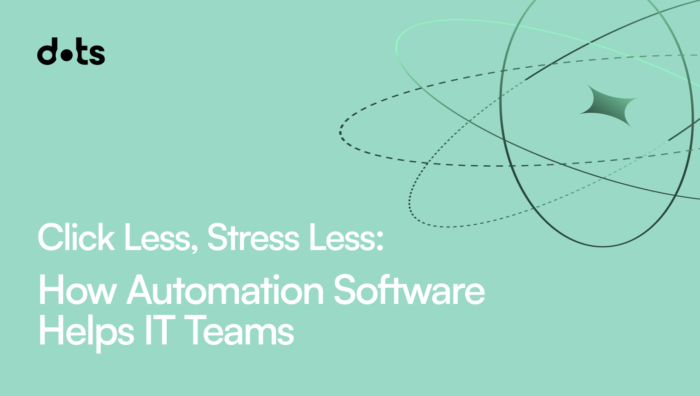A McKinsey & Company study recently dropped a jaw-dropping statistic: Generative AI tools can automate work activities that eat up a whopping 70% of employees’ time.
Have we got your attention now?
In addition, the AI-Enabled ICT Workforce Consortium—featuring the who’s who of tech (Cisco, Google, IBM, Intel, Microsoft)—says that 92% of jobs they’ve analyzed will undergo high to moderate transformation because of AI.
That’s not a minor shift. That’s tectonic.
Even the IT industry, the very people building these tools, has to stay a few steps ahead. Why? Because someone has to run, train, monitor, maintain, and improve the systems. Whether it’s dealing with asset lifecycle management, securing endpoints, or deploying updates, AI can help—but only if the right people are behind the wheel.
The Good News for IT Folks Out There
The same consortium behind those big predictions aren’t just sounding alarms—they’re building lifeboats. Massive ones.
Cisco aims to train 25 million people in cybersecurity and digital skills by 2032, while IBM is upskilling 30 million individuals by 2030, including 2 million in AI-specific roles. Intel, too, wants to empower over 30 million with AI skills by 2030.
Microsoft has already beaten its goal of training and certifying 12.6 million people a year ahead of schedule, and Google is backing all this with $130 million for AI training across five continents.
We at Dots, are not (yet) part of that consortium. We’re not operating at a mega-corp scale (yet), but we know the pressure IT teams face. So, let’s break down how AI is reshaping core IT roles and what you can do to not get swept away.
IT Help Desks: From Firefighting to Strategic Support
Let’s be honest: traditional help desks were chaos factories, with an endless list of tickets, repetitive questions, and a whole lot of “try turning it off and on again.”
What’s Changed:
- Chatbots are now handling the most common Tier 1 tickets (password resets, login issues, printer tantrums).
- Natural language processing (NLP) tools categorize and route requests automatically, saving teams from the triage mess.
- AI assistants help techs find solutions faster, pulling up documentation, past fixes, and real-time recommendations.
Instead of being buried in mundane requests, support agents are stepping up as analysts, trainers, and infrastructure advisors. And because they’re not swamped 24/7, the employee experience improves too, which helps everyone sleep better.
The twist? Help desk agents now need to know how to train and tweak those AI tools. If the bot’s making bad decisions, it’s not the bot’s fault—it’s on the humans to fine-tune the model and keep it learning.
Data Management and Insights: AI as Your Data Whisperer
Data has always been the lifeblood of IT, but it’s often messy with disparate systems, siloed logs, and formats that look like alien languages.
Where AI is stepping in:
- Auto-tagging and organizing files across systems.
- Anomaly detection in real-time (so you’re not finding out about the breach three weeks later).
- Predictive analytics that help with capacity planning, budget forecasting, and performance tuning.
But again, someone has to put up the guardrails. AI doesn’t know if it’s analyzing bad data, and it definitely doesn’t understand context like humans do. The best teams right now are learning how to validate and train AI models with a clear understanding of their infrastructure’s quirks.
Innovation: AI Gives IT Teams the Gift of Time (Finally)
Time has always been the most precious resource for all types of teams and people, but it is also the first thing to vanish for IT teams under a pile of tickets, upgrades, audits, and vendor calls. But with IT automation software doing more of the grunt work, IT professionals are finally getting breathing room.
And guess what happens when smart people get time? They start building cool stuff.
AI isn’t just about removing manual labor. It’s unlocking creative thinking in roles that were historically reactive. Teams are now:
- Developing internal tools to fix problems before they become problems.
- Testing emerging tech like edge computing, robotic process automation (RPA), and AI itself.
- Partnering more with departments like marketing, sales, and product to solve cross-functional issues.
IT Infrastructure Management: Smarter Ways to Keep the Lights On
Infrastructure is where things get real. Networks, endpoints, cloud environments, hardware—if any part goes sideways, it’s your phone ringing. AI is making it easier to manage this entire ecosystem without burning out the team.
Big Wins AI Is Delivering:
- Smarter IT asset management (ITAM): AI can track inventory, predict lifecycle stages, and flag devices before they fail.
- Automated IT procurement workflows: The system knows when you’re running low on laptops, submits an order, and sends a heads-up.
- Delivery coordination: From warehouse to doorstep, tools can now schedule, track, and optimize delivery windows.
Instead of updating spreadsheets and guessing when equipment will arrive, teams get proactive alerts and dashboards. Some AI tools can even recommend which vendor to buy from based on price, availability, and location, cutting the time spent juggling suppliers.
But where human judgment is still critical in making decisions based on company-specific nuances, compliance needs, and employee preferences. AI will show you the options, but someone still needs to pick the right one.
Onboarding and Offboarding
Yes, you read that right. You wouldn’t think onboarding and offboarding would be on an IT team’s greatest hits list, but here we are. Between provisioning laptops, shipping gear, creating accounts, revoking access, and wiping drives, it’s become a full-time job.
AI doesn’t eliminate the work but rather orchestrates it.
For both IT and HR teams, that means no more email tags, manual spreadsheets, or last-minute panic. And if you’re onboarding remote employees, you’re ensuring they’re ready to go on day one, not day twelve.
The Real Win? More Time, Less Chaos
AI isn’t here to erase IT roles—it’s here to reshape them. The goal is to hand teams the tools to spend less time reacting and more time building, thinking, and solving problems before they hit your inbox.
The time to get started with AI automation is now. And it’s now Dots o’clock. Our platform can be your autopilot for logistics, ITAM, and onboarding, which means your team can spend more time building the future.
Say goodbye to the days of chaotic equipment spreadsheets and onboarding checklists taped to someone’s monitor. Contact us today to book a demo.




